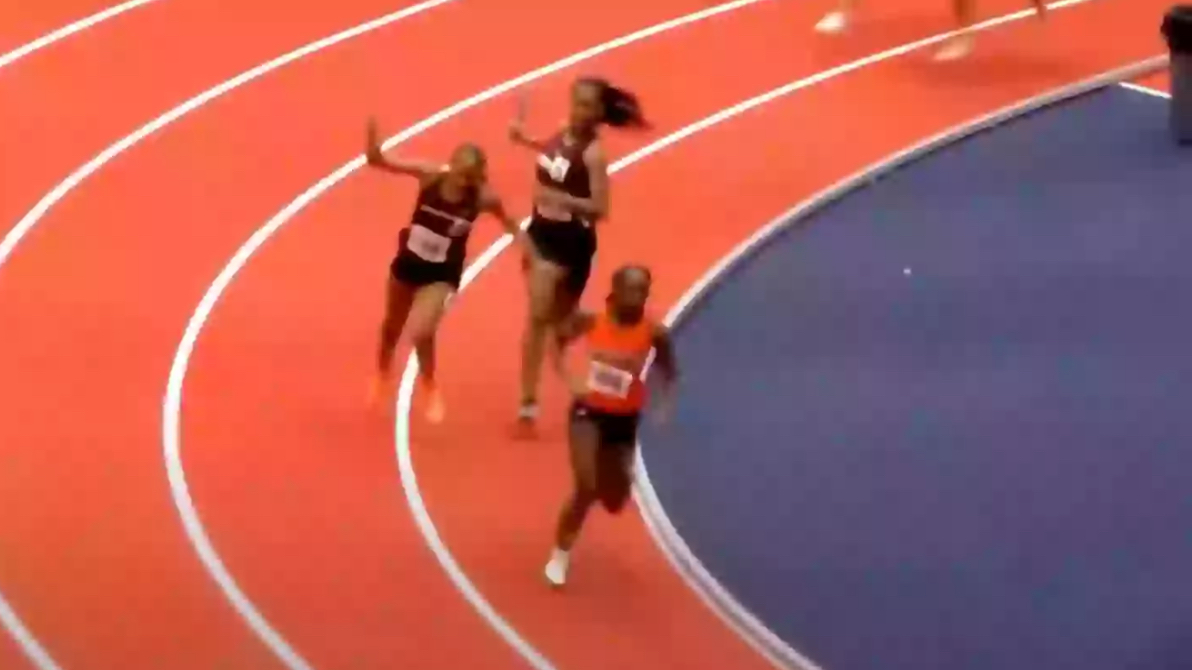Kaelen Tucker Opens Up About Baton Collision Injury: An In-Depth Look at a Controversial Track Incident
A high-pressure 4×200 meter relay race at a regional track meet in Virginia took an unexpected and alarming turn on March 7 when Kaelen Tucker, a junior from Brookville High School, suffered a serious head injury after being struck by a baton. The shocking incident, captured on video and widely circulated on social media, has ignited a national conversation about the safety of athletes, the need for proper training, and accountability in competitive sports.
Tucker, who had recently set a new record at the Virginia High School League (VHSL) Class 3 State Indoor Championships in the 55-meter race, was expected to perform well in the relay, possibly setting another personal best. However, what should have been another moment of achievement for the young athlete was marred by an unfortunate and dangerous mishap during the race. While competing in the relay event, Tucker was struck in the head by the baton during the exchange, resulting in an injury that disrupted the race and left Tucker with both physical and emotional wounds. The collision has sparked heated debate across the athletic community about what went wrong and whether any preventive measures could have been taken.
The incident involved Tucker’s opponent, Alaila Everett, a runner from I.C. Norcom High School, whose actions during the baton exchange have drawn significant scrutiny. Many are questioning whether the baton mishap was simply an accident or whether it could have been avoided with better preparation or awareness of the risks involved. The moment of collision, which occurred during a crucial part of the relay, has left many wondering if the event could have been handled more carefully to prevent such an injury.
Tucker has publicly expressed her feelings about the incident, recounting the traumatic experience and demanding an apology from Everett. The injury and the events surrounding it have not only left Tucker with lasting physical consequences but have also made her rethink the safety of high school track and field competitions. The situation has drawn reactions from coaches, athletes, and officials, who are now reflecting on how incidents like this can be prevented in the future.
Tucker explained in an interview the sequence of events leading up to the collision. “On the back curve, I kind of got cut off, and I tried to pass her the first time, so I let her go ahead. I knew when I got fully on the curve that I was just going to have to push through past her. So, as we were coming up in the middle of the curve, we were bumping arms a lot. So, I got a little more on the outside of the curve to go around her. When I finally pushed through to get in front of her, that’s when she hit me in the head with the baton.”
Tucker’s detailed account of the race highlights the tight dynamics of the 4×200 meter relay and the intense physical contact that can happen, especially during the baton exchange. The tight race conditions and the high-speed nature of the event meant that any small misstep or miscalculation could have a significant impact. In this case, it was the baton exchange itself that proved to be the dangerous factor.
The incident has led to widespread concern about how such accidents can be prevented in the future. Coaches and track officials have emphasized the importance of proper baton handoffs and the need for more awareness regarding the safety of athletes during high-speed exchanges. Some are suggesting that additional training and practice be implemented to help prevent similar incidents. Others are calling for a review of safety protocols in high school track competitions, hoping that a system can be established to ensure the well-being of all participants during such fast-paced races.
The conversation surrounding this incident has also raised important questions about accountability. Who is ultimately responsible when accidents occur during a race? Is it simply a case of bad luck, or does there need to be more stringent measures in place to protect athletes from unnecessary risks? While many have expressed understanding that accidents happen in competitive sports, there is a growing recognition that more attention needs to be paid to athlete safety in high-stakes events like this one.
For Tucker, the road to recovery remains uncertain. Not only has she had to cope with the physical aftermath of the injury, but she has also had to process the emotional toll the incident has taken on her. The pain of being injured in such a public way, combined with the sense of betrayal she feels from the event, has left her struggling to reconcile her passion for the sport with the dangerous realities of competition.
As the conversation continues, track and field officials and schools across the nation are carefully monitoring the situation, considering changes to safety regulations and training procedures. What happened to Tucker on March 7th has made it clear that more can be done to protect athletes in high-risk events. While Tucker’s injury was a deeply unfortunate incident, it has sparked a much-needed dialogue on how to keep athletes safe while still fostering a competitive and rewarding environment for them to excel.
